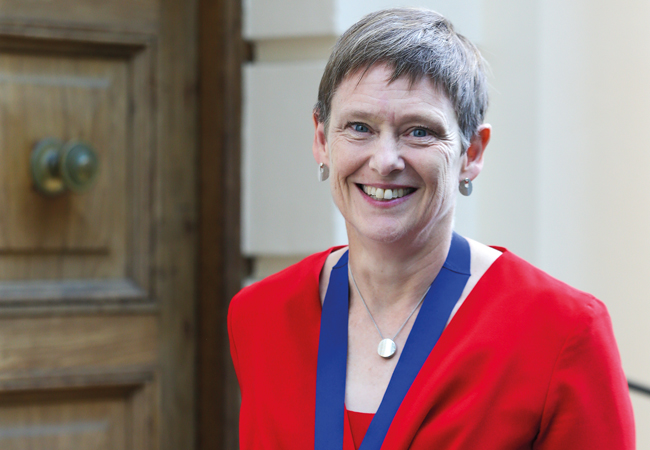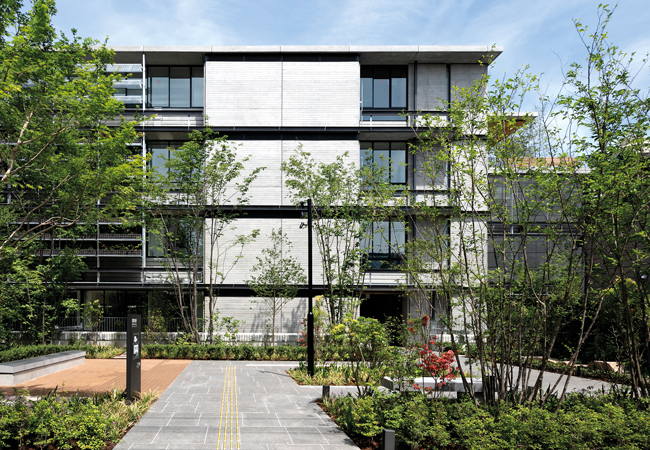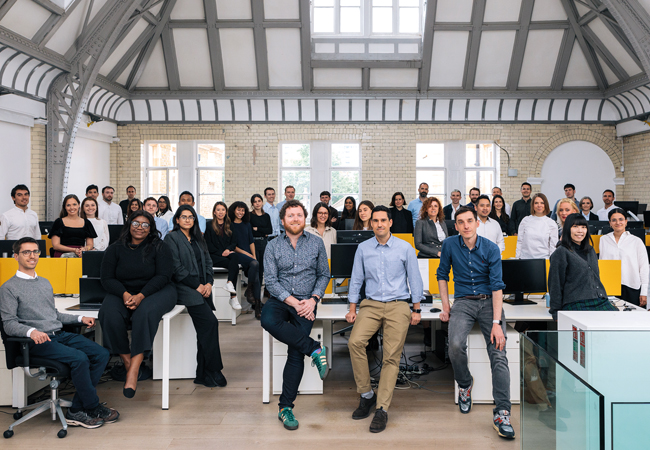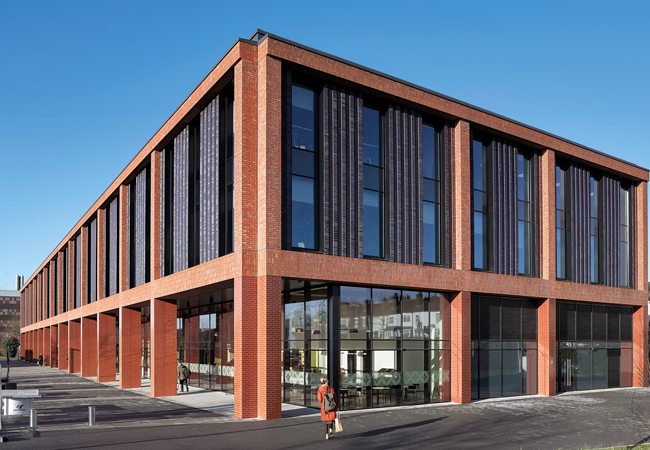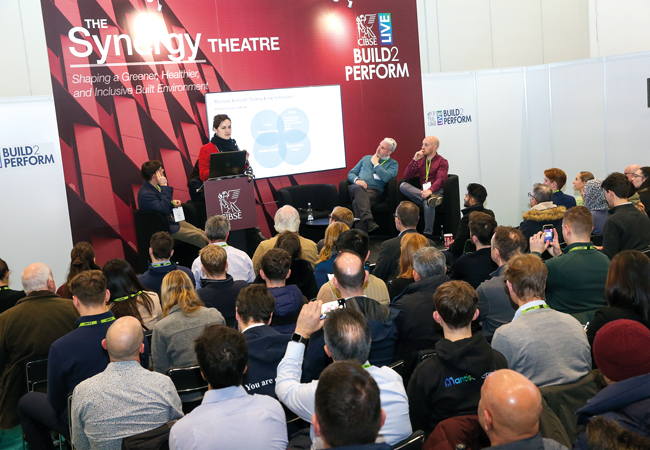
Julie Godefroy speaks at a session on evaluating retrofits
With CIBSE involved in key policies and guidance around net zero and building safety, CIBSE Build2Perform Live 2023 offered insight into the engineering strategies and technologies that are dominating the industry at the moment.
Speakers and exhibitors focused on key topics, including the impact of the Building Safety Act, embodied energy, heat pumps and digital tools. There was time for celebration, too, with the CIBSE Building Simulation Awards and Society of Digital Engineering Awards held during the event.
Among the seven stages at London ExCeL was, for the first time, Light2Perform, and content around building safety was provided by CABE’s Built Environment Live, which ran alongside the main event.
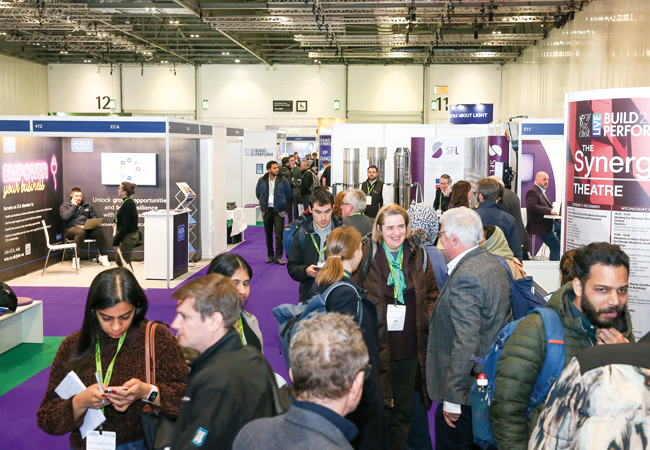
Build2Perform Live was opened by CIBSE vice-president David Cooper FCIBSE, who told delegates that it had attracted a record number of registrants. He was followed by a keynote from the team developing the Net Zero Carbon Buildings Standard (NZCBS), which includes Julie Godefroy, head of net zero policy at CIBSE, and Katie-Clemence Jackson, sustainability associate at QODA and chair of the NZCBS technical steering group.
The group aims to achieve a robust definition for net zero buildings in the UK and create a rule book to assess new and existing buildings. A new tool is also being developed to balance ‘top-down’ budgets and ‘bottom-up’ performance levels to produce net zero carbon pathways and limits.
It’s about data-driven decision-making; without data you’re just another person with an opinion– Phil Birch, Amazon
‘We have modelled different scenarios of decarbonisation to help set new limits and requirements in the standard, treating operational energy and embodied carbon as one entity’, said Clemence-Jackson. Godefroy spoke about future updates. ‘We need to look at district heating and cooling networks, and how we assess these and set limits,’ she said.
Andrew Moore, from the Health and Safety Executive, led a talk on the Building Safety Act. He explained that there are significant new requirements to demonstrate competence on all regulated building work, not just on ‘higher-risk buildings’. ‘Competence cuts across the whole of the industry. It’s a key driver to improving the built environment, to reach all of our strategic aims, not just building safety,’ he said.
‘We want to see how you ensure that your work is in compliance with the Building Regs; industry needs to step up and take responsibility for its designs.’
Do’s and Don’ts of lighting
A Light2Perform session on the Top 10 Do’s and Don’ts of Lighting was a popular draw.
Experts discussed the importance of a well-crafted specification that balances innovation, client budget, and sustainability. ‘A good spec will set out the requirements of the employer, but in a way that the engineer can design an innovative solution while taking into account all of the standards,’ said Sophie Parry FSLL, head of Trilux Akademie at Trilux Lighting.
Hoare Lea project director Ruth Kelly Waskett MCIBSE FSLL highlighted that the process needs continual client involvement when considering each aspect of a project, including energy reduction, disassembly, repair, and reuse.
Parry agreed, emphasising the importance of education and awareness in lighting, and advocating for open sharing of knowledge with designers and clients.
The discussion delved into the significance of energy reduction, sustainability and cost. Simon Robinson FCIBSE FSLL, technical director at WSP, stressed the importance of these criteria for engineers in achieving energy certification. ‘Anything that helps get us there should be entertained. Lighting is visible, so we can make a statement with this,’ he said.
TM65’s growing influence
CIBSE’s TM65 series has helped engineers understand and calculate embodied energy in designs and systems. A further four TM65 documents are set to be published around calculating embodied energy, including local addenda for the USA and the UAE.
Francisco Sierra, senior lecturer at UWE Bristol, highlighted the lack of data in the UAE on embodied carbon. He said the TM65 aligns with local decarbonisation policies.
Amazon’s senior programme manager for sustainable buildings, Phil Birch, outlined how the company has used TM65 to align with its Climate Pledge. ‘We’re doing countless calculations to work out the embodied carbon of our primary buildings, as well as the MEP we use. It’s about data-driven decision-making; without data you’re just another person with an opinion,’ he said.
Amazon is working with Introba to create TM65.3, which will cover embodied carbon in logistics buildings to improve the accuracy of calculating the carbon footprint of these spaces. Other future versions, such as TM65.4 will cover embodied carbon in office HVAC systems, are in progress.
Kristina Allison MSLL MCIBSE, vice-president of the SLL discussed ‘practical journeys throughTM66 (which she co-authored) and TM65.2’, a circular guide and tool that helps asess lighting embodied energy.
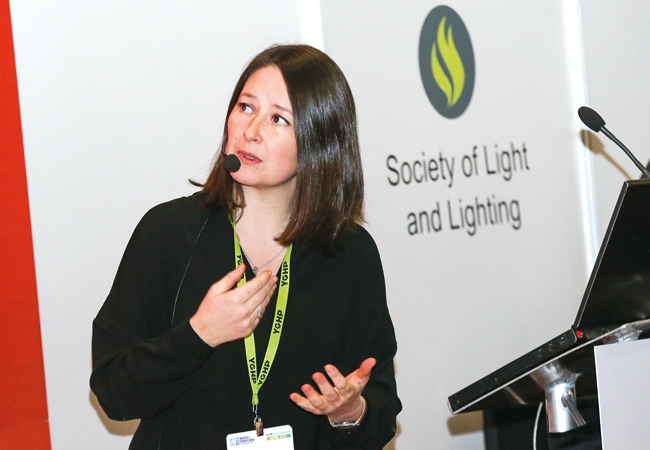
Kristina Allison MSLL MCIBSE, vicepresident of the SLL
Making cities resilient
Reducing emissions from the cities will be fundamental if issues around global climate change are to be solved. This was the message from physical geographer Gerald Mills, who highlighted that 70% of the world’s CO2 emissions are from cities.
Mills, associate professor at University College Dublin, stressed that a combination of adaptation and mitigation was required to ensure the world’s cities could cope with the impacts of current and future hazards. He cited the example of the French city of Nîmes, which has implemented measures to create accessible outdoor cool spaces. Heat gain has been reduced by maximising shade via tree canopies, increasing the amount of water cover, and enhancing ventilation.
Other speakers included Darren Woolf, head of building physics for Wirth Research and visiting professor at Loughborough University, who explained the role of the UK Urban Environmental Quality Partnership. Hosted by CIBSE, members are working on publications covering topics such as urban vegetation systems, outdoor thermal comfort, city wind microclimate guidelines, and modelling of outdoor air quality.
The challenge of tackling overheating in the UK’s housing stock was examined by Passivhaus designer Joseba Perez de Larraya Sola, of Pollard Thomas Edwards, and Kai Salman-Lord, senior engineer at Max Fordham. They looked at how greater use of shading devices for buildings could help tackle this problem, especially in a residential setting. The pair have been heavily involved in the launch of a new guide from the Good Homes Alliance, Shading for housing, which seeks to embed shading as central to a building’s design and built in from the start.
Staying cyber secure
An important issue that is often overlooked in the industry is cybersecurity. Sweco digital manager Andrew Krebs shed light on the pervasive impact that breaches of digital security can have, saying ‘it affects everything we are doing, from safety to decarbonisation’.
Carl Collins, head of digital engineering at CIBSE, highlighted the existing gaps in securing energy systems, pointing out a lack of understanding of how building elements interact: ‘We need to really understand the connectivity of what we are installing, and the information to which it has access.’
He urged the audience to seriously consider security, and drew parallels with the comprehensive approach taken towards other potential threats, such as fire.
CIBSE’s technical officer Hywel Davies HonFCIBSE expressed concern over the apparent lack of interest in cybersecurity. ‘It is often referred to as the monster in the room, but it only becomes scary when you don’t think about it. Understand where threats may come from and address it,’ he said.
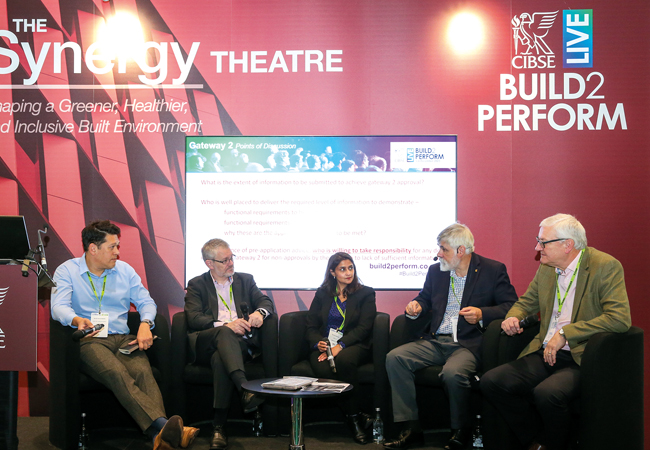
A session introduced by Julie Godefroy gave an overview of the Retrofit Revisit project, supported by Historic England and CIBSE and co-led by Studio PDP and CIBSE. The project applied building performance evaluation techniques to 10 homes that had been subject to a deep retrofit over the past 10 years. It particularly looked at energy performance and indoor air quality, and found that the retrofitted homes still performed extremely well in terms of energy use. ‘Energy performance has not significantly degraded at all, which is a very positive finding. It’s much better than the national average, and many of the homes perform more or less in line with Leti targets,’ Godefroy said.
Air leakage was slightly higher, with degradation of doors and windows being the key contributor. Feedback from residents was that conditions were comfortable, but summer comfort rated less well than winter comfort. There were some issues around system maintenance, said Godefroy, with complex services generating more problems.
The risk of mould from ambient conditions, was assessed by measuring relative humidity and surface temperature, and tests looked at the movement of moisture through the fabric. Mould related to ambient conditions was rated as very low risk across seven of nine homes tested and there was generally low CO2 across all homes, indicating good ventilation.
Pumped for growth
Independent consultant Roger Hitchin shared research by the IEA Heat Pump Technologies programme on non-domestic heat pump retrofits. The Annex 60 programme (Heatpumpingtechnologies.org/annex60) is an international collaboration aimed at identifying and quantifying technical options for non-domestic retrofits, and providing advice and tools to help decision-makers.
‘There is very little guidance for building owners and tenants,’ said Hitchin. ‘We want to provide high-level guidance so they can look at different heat pump systems.’

The event attracted leading building services brands from across the industry
The project will link to case studies and Hitchin is particularly keen to include studies showing comparative costs. An online tool will invite users to describe the building and its HVAC systems and the degree to which fabric will be upgraded. It will then come up with a shortlist of solutions worth investigating.
Ken Gordon, CEO of the Ground Source Heat Pump Association(GSHPA) , spoke of the upcoming revised TM51 guidance on GSHPs, which would include information on shared ground loop systems. These are increasingly popular because they offer economies of scale, said Gordon.
Accessible acoustics
In a discussion about wellbeing in the built environment, Foster & Partners associate partner Milena Stojkovic FCIBSE said: ‘We have a responsibility to create environments that are healthy and inclusive to use.’
There has been a shift away from traditional accessibility measures focused on physical impairment to a more inclusive approach for neurological conditions, said Rob Turpin, head of sector healthcare at the BSI. Challenges have been identified relating to lighting, acoustics, route preview, signage, and clarity in buildings.
Turpin introduced PAS 6463 Design for the mind, a world-first standard that covers designing for neurodiversity. He hopes it will be a catalyst for international standardisation.
Tin Oberman, senior eesearch fellow at UCL, discussed the importance of soundscapes and inclusive acoustics. He and Turpin highlighted that the majority of auditory research acoustics have been driven by healthy-hearing participants, and knowledge about how most people perceive sound is missing.
Speakers noted that the event did not create the most accessible acoustic environment. Rachel Smalley, head of inclusive design at Jacobs, said future approaches must ensure the environment is suitable for a diverse population, and that requirements are integrated from the outset.
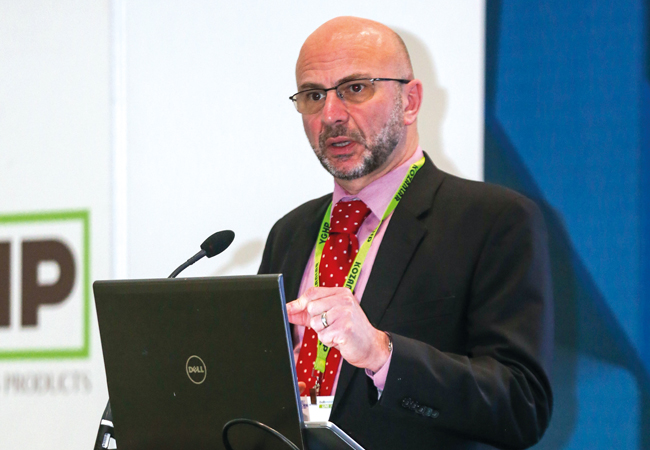
Tim Galloway, deputy director, building safety programme, HSE
Crossing generations
A Young Engineers Network (YEN) panel focused on how to foster collaboration between older and younger members, including ‘buddy’ systems and mentoring.
Ruth Tatanga MCIBSE, chair of YEN London emphasised the importance of examining what seniors can learn from younger colleagues, and Jack Kenny, senior M&E consultant at RLB, agreed.
‘Play to the strengths of both generations, foster flexibility, and provide opportunities without rigidity,’ he said.
- For more information on Build2Perform Live, visit bit.ly/CJLIVE23



